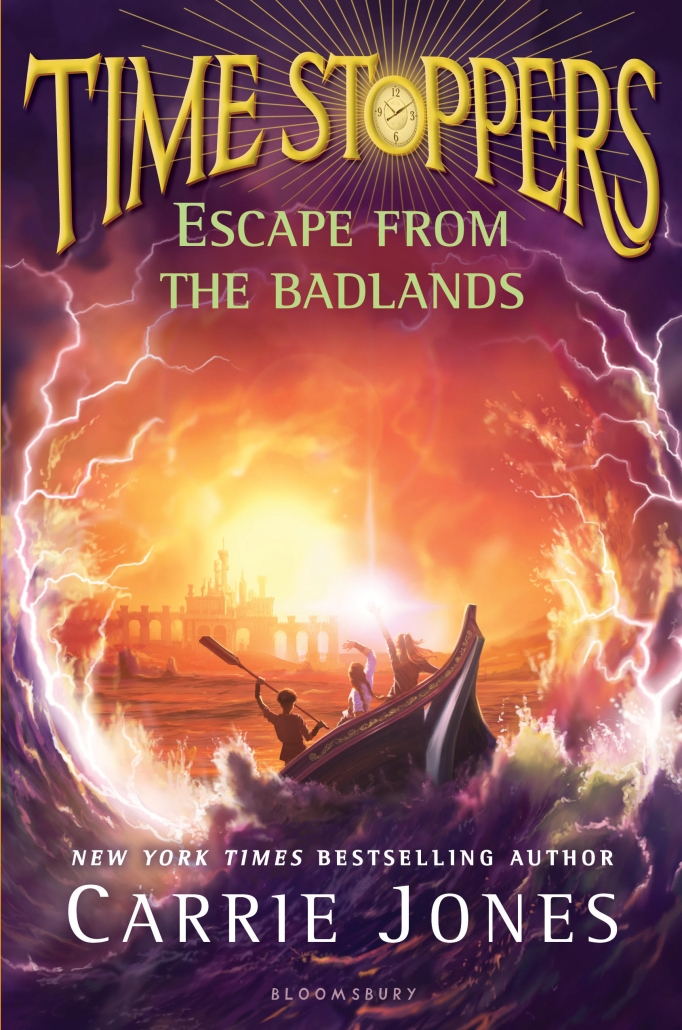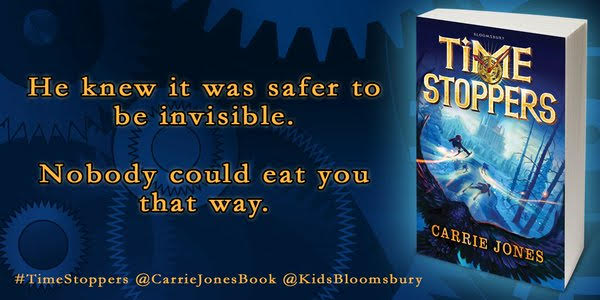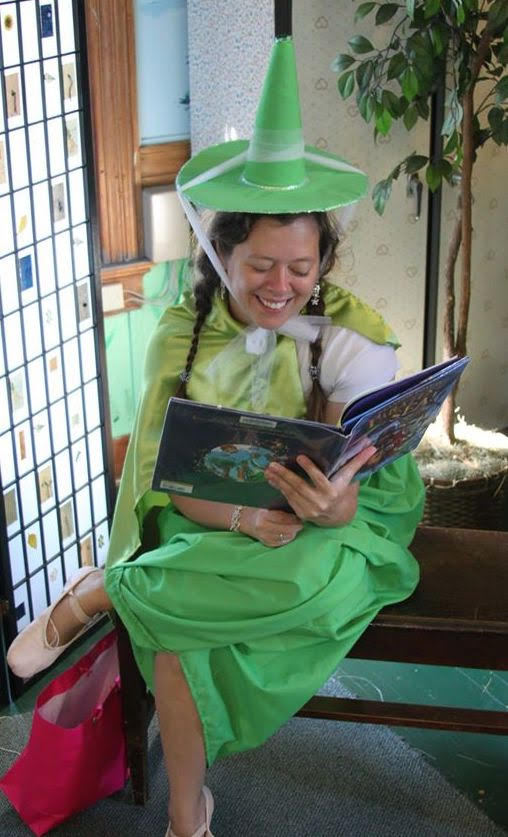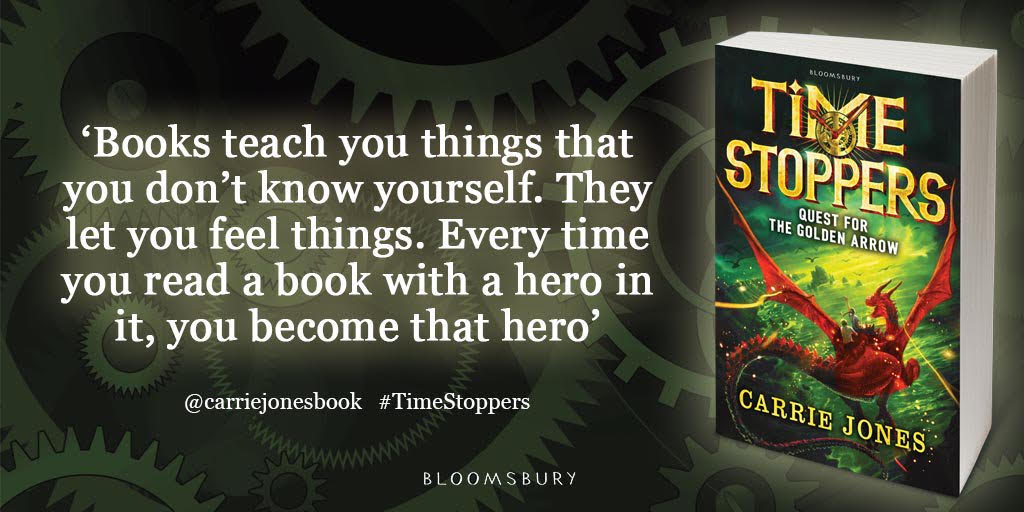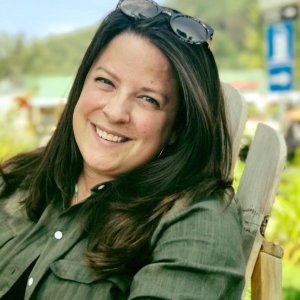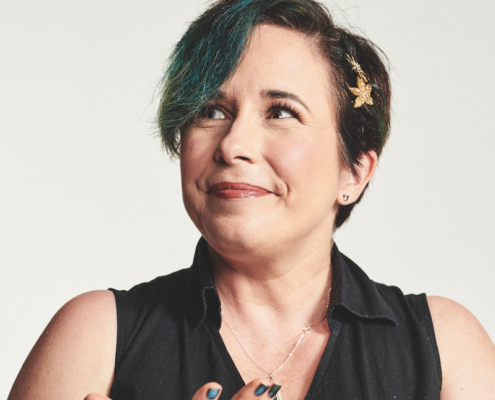Interview with Carrie Jones: Have the Courage to Put Your Story Out into the World
On August 7, 2018, we welcomed ESCAPE FROM THE BADLANDS is the last book in the middle-grade fantasy series called TIME STOPPERS.
Time Stopper Annie’s newfound home, the enchanted town Aurora, is in danger. The vicious Raiff will stop at nothing to steal the town’s magic, and Annie is the only one who can defeat him–even though it’s prophesied that she’ll “fall with evil.”
Alongside her loyal band of friends Eva, Bloom, SalGoud, and Jamie, who still isn’t quite sure whether he’s a troll or not, Annie journeys deep into the Raiff’s realm, the Badlands. The group will face everything from ruthless monsters to their own deepest fears. Can Annie find the courage to confront the Raiff and save everyone, even if it means making the ultimate sacrifice?
Welcome, Carrie! Tell us a little bit about your book.
ESCAPE FROM THE BADLANDS is the book of my heart. The Top Five Things You Should Know about this book:
- It’s about friendship. The characters are best friends.
- It’s super quirky. Think flying pig cars.
- It’s a bit scary. One reader put it in the freezer seven months ago. It’s still there.
- It has dragons, gnomes, hags, dwarves, trolls, and time stoppers.
- But mostly it’s about friendship and believing in yourself.
Where did the inspiration for writing this book come from?
This whole book ties into the reason I’m even a writer. I’d been a newspaper editor and lived in Maine. My daughter would be in the car with me as I drove to assignments and she’d beg me to tell a story about a girl and boy who were best friends, found a magical town in Acadia National Park and had to save the world. At the time she wasn’t reading any books that had an interracial boy-girl friendship. This made her angry.
Nobody wants an angry fifth grader so I made up more story every car ride and eventually realized that it would be much easier to sneak out five pages at work and give them to her to read rather than improvising it up all the time.
Sadly (for me), my daughter is a really fast reader, so she’d finish and be like, “Is that it, Mommy? I want more.”
Eventually, I realized that writing this story about Annie Nobody and Jamie Alexander was way more fun than being a newspaper editor and writing about land-use setbacks at planning board meetings. I applied to VCFA, quit my job and this book eventually found its way to publication.
Wow, amazing how that played out! Were there any unsuspected hiccups along the way?
Well, it was the first book I ever wrote and I think it’s the 15th or so that I’ve published? Does that count as a hiccup?
Top Five Reasons It Took So Long:
- Even though I entered VCFA thinking I was a middle-grade writer, I was actually first published in YA.
- It was a hot mess.
- Did I say it was a hot mess?
- I had to work on it a lot because it had so many characters and so much world building and I wanted to make it a good story, a story that mattered, a story that deserved to be out there.
- Let me reiterate: Hot mess.
What was your background before VCFA? How did you decide to enter the program?
Like I just mentioned, I was a newspaper editor for a small paper in Maine. Before that I was an awful poet, reporter, columnist, gymnastics coach, undercover prostitute, emergency services dispatcher and church secretary. I’ve also been a volunteer firefighter, news photographer and the youngest female city councilor in my city.
But I came to VCFA terrified, positive that I wouldn’t fit in, wouldn’t find friends, that I was an imposter. The faculty and students quickly made me feel welcome, loved, and worthy. It was an incredible gift to end up surrounded by people filled with empathy and passion for story and craft.
I entered the program because it did a lot of really cool things:
- I didn’t have to move to attend.
- It had cool teachers whose books I loved.
- It focused on kids and young adults.
After I applied, I told one of my friends and they said, “Carrie, that’s like the Harvard of kids lit.”
And I ran after the postal worker, but it was too late. The application was gone. I hadn’t even proofread it.
Then I absolutely panicked for a bit until I dreamt that I was on top of a mountain in the Himalayans, climbing up this tower where M.T. Anderson and Tim Wynne Jones were standing on the top platform. I started to back down the stairs and Tobin opened his arms wide and said, “Carrie. It’s okay. You belong here.”
So, obviously, VCFA is capable of telepathically entering your dreams prior to getting your acceptance letter.
What year did you graduate and what was your class name?
I graduated in 2007 and we were the Whirligigs.
Was there one lecture in particular that you can recall an a-ha moment that reinforced that you belonged in the program?
I don’t think there was a lecture that gave me an a-ha moment even though the lectures were fantastic and so full of information and hints and tips. It was when I read this absolutely ridiculous story I wrote about bunnies taking over the world and Rita Williams-Garcia laughing hysterically. That was the moment that I thought, “Okay. Maybe I can do this. Maybe I belong.”
Could you talk about your experience in lectures or during your semester work with advisors and how it may have shaped the writing life you are living now?
The best part of VCFA is that if you’re open to it, you can soak up every moment, every lecture, every mentor’s feedback and let it help mold you into the writer you are. Learning is always present, vibrating with context and text, consciously and also in the buried-deep recesses of your brain.
All those moments, the love of revision, of story, the sense of being part of the ancient craft-art of storytelling? I received them from Vermont. And every word reflects that knowledge. Every sentence is part of that legacy.
What about VCFA affected your career and where you are now?
I was unpublished before I entered Vermont and hadn’t submitted anything until I started school. VCFA gave me the confidence to send out my work. About a year into the program, one of my books was pulled off the slush pile and within two months, two other books were under contract. That never would have happened without VCFA. The program gave me confidence and skills.
Since then, my books have won awards (IPPY) but some have also become New York Times and international bestsellers. That’s almost ridiculous when you think about how scared I was, how much of an imposter I felt like, before I went into those brick buildings. My hands would shake with fear during the first week of residency. They’d shake so much I had to sit on them. I can hardly recognize the me from then. And it’s because of VCFA and how beautifully nourishing it was.
Do you have any VCFA connections that affect your career right now?
Bethany Hegedus, founder of the Writing Barn was in a class or two ahead of me and now I get to mentor adult writers in her Write! Submit! Support! program, which is almost like a micro-sized MFA. What I love about interacting with 12 or so students in six-month stints is that it energizes me and makes me relearn craft and structure and story so that I get to constantly grow with the students who are just so awesome. I imagine that’s a bit what it’s like for the faculty at Vermont.
What would you say to potential students or current students who are hoping to further their writing career?
I’d say to go for it, to take chances and risks, to say yes to your dreams and to make the practical action steps to go for your dreams. VCFA is the perfect action step because it combines craft, love of story, and support in such a beautiful blend. Writing isn’t about hiding under the covers, waiting to peek out. It’s an action, an attempt at communication wrapped in empathy wrapped in thought and that has to be assembled and discovered, word by word. But then it has to be sent out into the world.
Don’t be afraid to send your story out into the world.
What’s coming in the future for you and your writing life?
I have a book coming out in July. I wrote it with Steve Wedel and it’s teen horror. Here’s the copy:
It should have been just another quiet night on the farm when Logan witnessed the attack, but it wasn’t.
Something is in the woods.
Something unexplainable.
Something deadly.Hundreds of miles away, Chrystal’s plans for summer in Manhattan are abruptly upended when her dad reads tabloid coverage of some kind of grisly incident in Oklahoma. When they arrive to investigate, they find a witness: a surprisingly good-looking farm boy.
As townsfolk start disappearing and the attacks get ever closer, Logan and Chrystal will have to find out the truth about whatever’s hiding in the woods…before they become targets themselves.
The Top Five Things You Should Know About IN THE WOODS.
- It’s creepy.
- It also has Kierkegaard quotes.
- It’s creepy.
- People like each other even though they are wicked different.
- It’s creepy.
And my regular life? I’m doing a bit more about epilepsy advocacy because I have epilepsy. I’d like a bit more depictions of epilepsy in children’s literature that isn’t a trope, stereotype or a plot device. That really matters to me.
I’ve also just become a ShelterBox Ambassador for my region of the United States along with being a Rotary International public image coordinator for half of Canada and a good piece of the United States. Sadly, none of that makes any money.
Oh! And ShelterBox (if you don’t know) is a really cool organization that helps the 85 million people who’ve been displaced by natural disaster or conflict. It provides emergency shelter and tools for displaced family and it’s just the most incredible organization that I’ve ever been involved with.
Last year, it provided emergency aid and life-saving supplies to 162,000 people in 23 countries. So, I’m super excited to be a part of that.
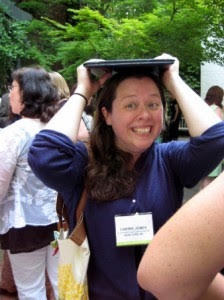
Carrie Jones’ award-winning fiction has been translated into multiple languages, and ended up on both New York Times and international best sellers lists. She received the Independent Book Publisher’s Award for her first novel, Maine Literary Awards and multiple press awards, as well as landing on multiple best book lists. Writing across genres, Carrie was also an award-winning newspaper editor, columnist and photographer, received a MFA from Vermont College of Fine Arts, and was awarded the honor of Distinguished Alum. She is the co-editor of Dear Bully and has been interviewed by NPR, Glamour, and multiple other national news outlets. She lives in Bar Harbor with two rescue dogs and a cat and some humans. She’s a ShelterBox ambassador as well as the public image coordinator for Rotary Zone 24 East, which covers the eastern half of Canada, parts of Maine, New York, and soon Michigan. She’s also the current Bar Harbor Rotary Club president.

